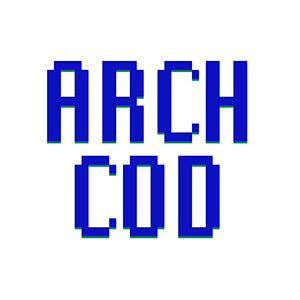Why Passive House Standard is a Gateway to Design Freedom
Michael Ingui is a partner at Baxt Ingui Architects and the founder of Passive House Accelerator. The Accelerator is a catalyst for zero-carbon building and a collaborative media platform for practitioners, developers, and manufacturers working to create better buildings through Passive House design and construction.
In my previous two articles, An Architect’s Guide To: Designing Your First Passive House and Aggressively Passive: Why Fierce Brand Competition is a Huge Win for Green Architecture, I provided a toolkit for architects who want to enter the world of high-performance building. However, as an architect, one thing that excites me most about Passive House is the capability of the standard to transform how I design homes from top to bottom.
Besides the health benefits of Passive House — they’re quiet, dust-free, bug-free, and provide 24/7 filtered fresh air — the most impactful benefit for designers is their minimal heat requirements. The building’s high-quality envelope and high-quality, large-scale windows and doors allow for the creation of spaces that would be difficult to keep comfortable. Removing radiators, large amounts of ductwork, and other heating elements also provides opportunities for open spaces that may be difficult otherwise. Bathrooms with tubs against windows, bedrooms on the street side of townhouses, and furnished rooftops that are amenities for clients instead of just places for mechanicals are only some of the design benefits.
Upper West Side Rear Façade
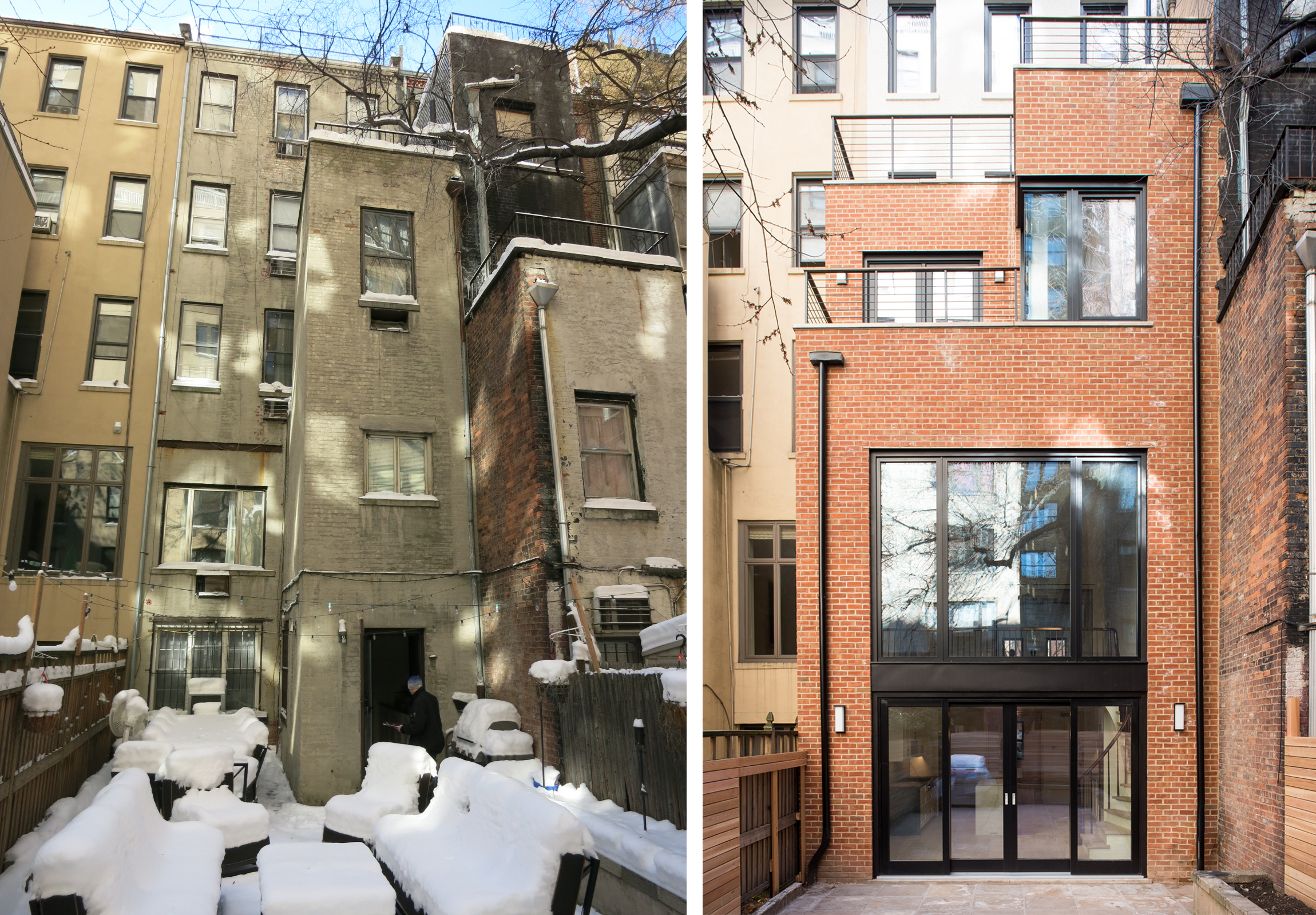
Finish Photography: Adam Kane Macchia (Adam Kane Macchia Photography)
This Upper West Side townhouse contained an existing, narrow three-story extension at the rear, stretching from the garden level to the third floor. Passive House measures allowed us to repoint and restore the brick and enlarge the extension, pulling the full width of the lower floors out to meet the old addition.
High-performance glazing turned what was once a dark interior space into a refuge at the rear of the house that included a new private roof deck. All three floors gained access to an abundance of natural light. In addition to the deck space, the enlarged windows made the third floor feel more spacious. Meanwhile, the double-height space on the ground and garden floors opened up the garden-level kitchen, allowing even the core of the garden floor to feel light-filled and airy.
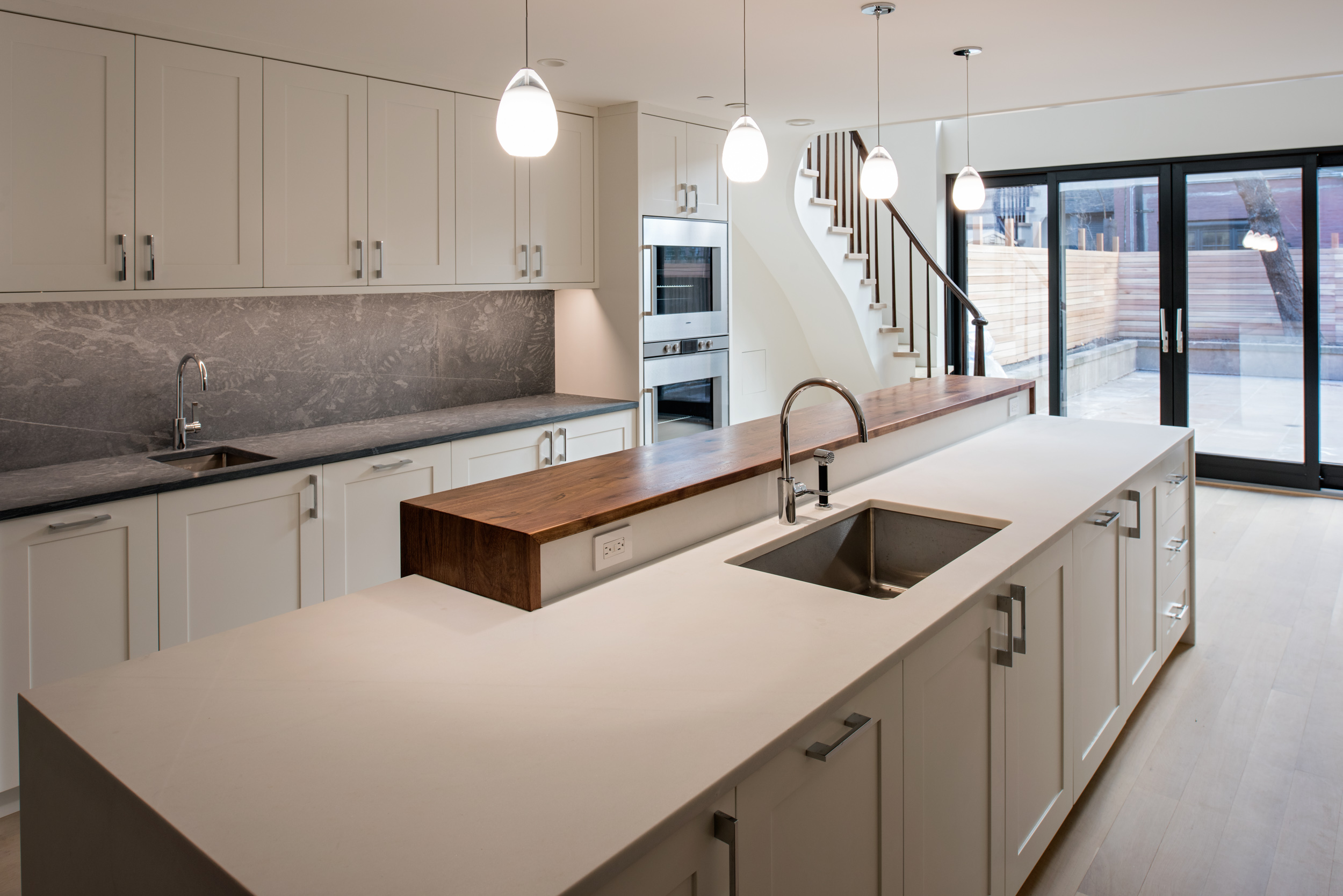
Finish Photography: Adam Kane Macchia (Adam Kane Macchia Photography)
Well-designed window systems with triple-paned, Passive House-certified windows allow for interesting glazing configurations and provide for façades made almost entirely of glass, even in cold-climate residential areas. The best part of all of it is that thermal breaks and proper insulation prevent draftiness by the windows, meaning that homeowners can fully utilize the entirety of their home’s square footage without sacrificing comfort.
Brooklyn Heights Rooftop Kitchen + Living Room

Finish Photography: John Muggenborg (New York Architectural Photography John Muggenborg)
Often, our clients are most excited about the design opportunities Passive House presents at the top of a house. Traditionally built NYC row houses have all (or most) of their mechanical systems on the roof. The result is unfinished, utilitarian spaces that are neither comfortable nor welcoming. Passive House mechanicals take up MUCH less space on rooftops, requiring fewer units that can easily be concealed with a few clever maneuvers. In this Passive rooftop, all the rooftop mechanical systems are hidden in the grey metal shed behind the bulkhead.
With this reclaimed space, the options are limitless for designers because it is effectively a blank canvas. It’s easy to create patio areas for entertaining guests or even green spaces with flower, herb, or vegetable gardens that can serve as oases from the city below. In this space, we built an outdoor kitchen and dining area with a separate living room setup. The rooftops of Passive Houses become opportunities for us to collaborate with homeowners to create the crown jewel of the home.
Brooklyn Heights Top Floor Workout Room
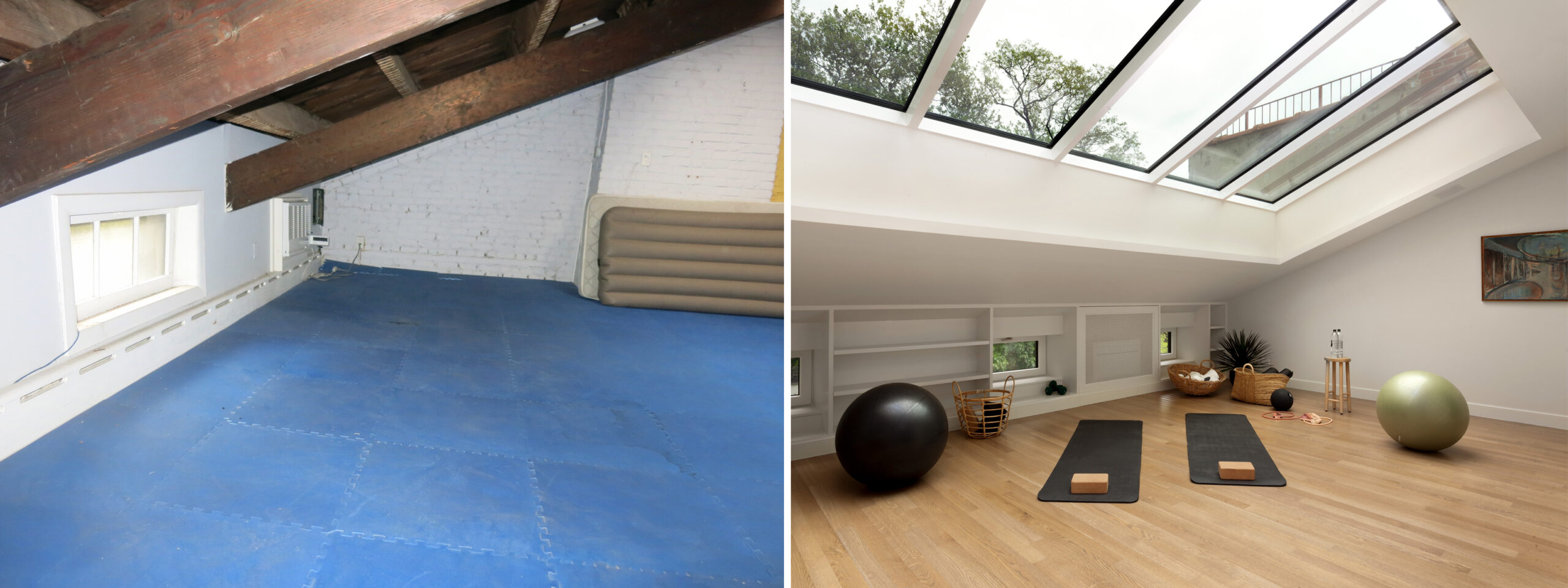
Finish Photography: Peter Peirce (peterpeirceinc – My WordPress Blog)
If creating a roof deck isn’t a priority, there are other opportunities that decreased rooftop mechanical systems can afford. Take this yoga and meditation room in a Brooklyn Heights Passive House.
The existing attic space was cramped, and a lot of square footage was lost due to structural beams and the pitched roof. By clearing away the existing roof structure and replacing it with an immense five-panel Passive House skylight system, we were able to raise the overall ceiling height. The space became walkable with the addition of a foot-tall window well. All of the mechanical systems for the room are hidden behind grates built into the millwork, and an exterior skylight shade regulates temperature during the hottest parts of the year.
Brooklyn Heights Primary Bath
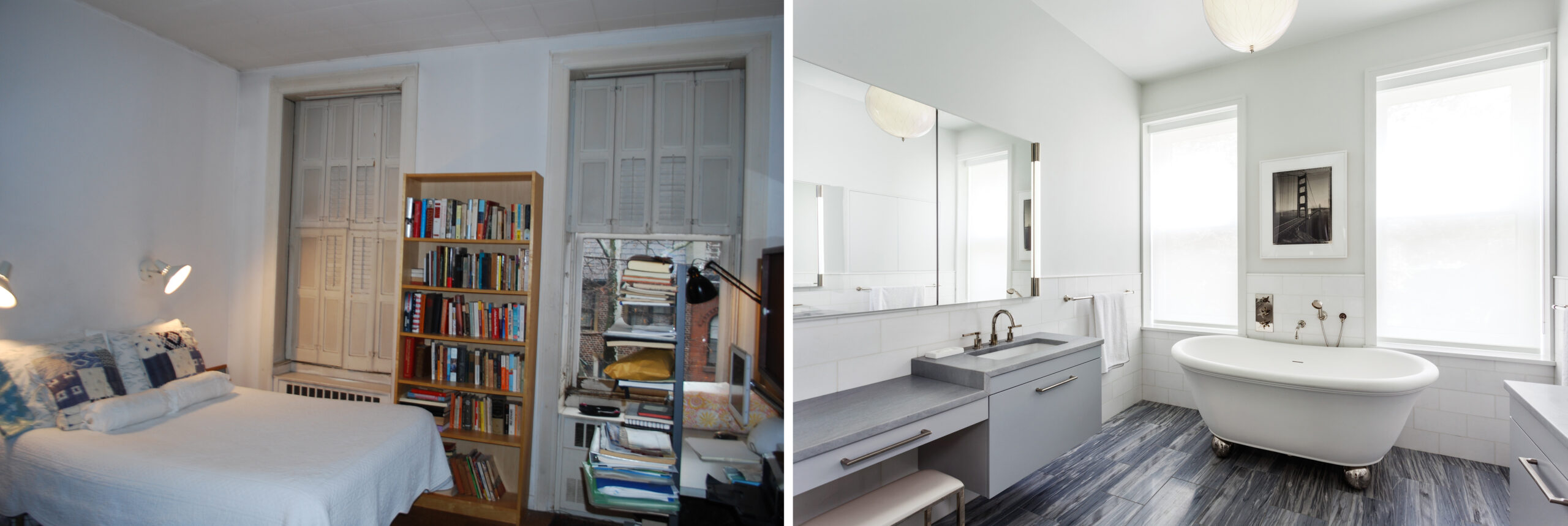
Finish Photography: Peter Peirce (peterpeirceinc – My WordPress Blog)
Passive House envelope improvements increase opportunities for all the rooms of a house. In this Brooklyn Heights Passive House, quality windows and no thermal bridges through the walls meant that we could convert a bedroom into a primary bath, complete with a freestanding tub right next to the exterior wall and nestled between two windows and walls free of radiators — all without any draftiness.
Brooklyn Heights Kitchen
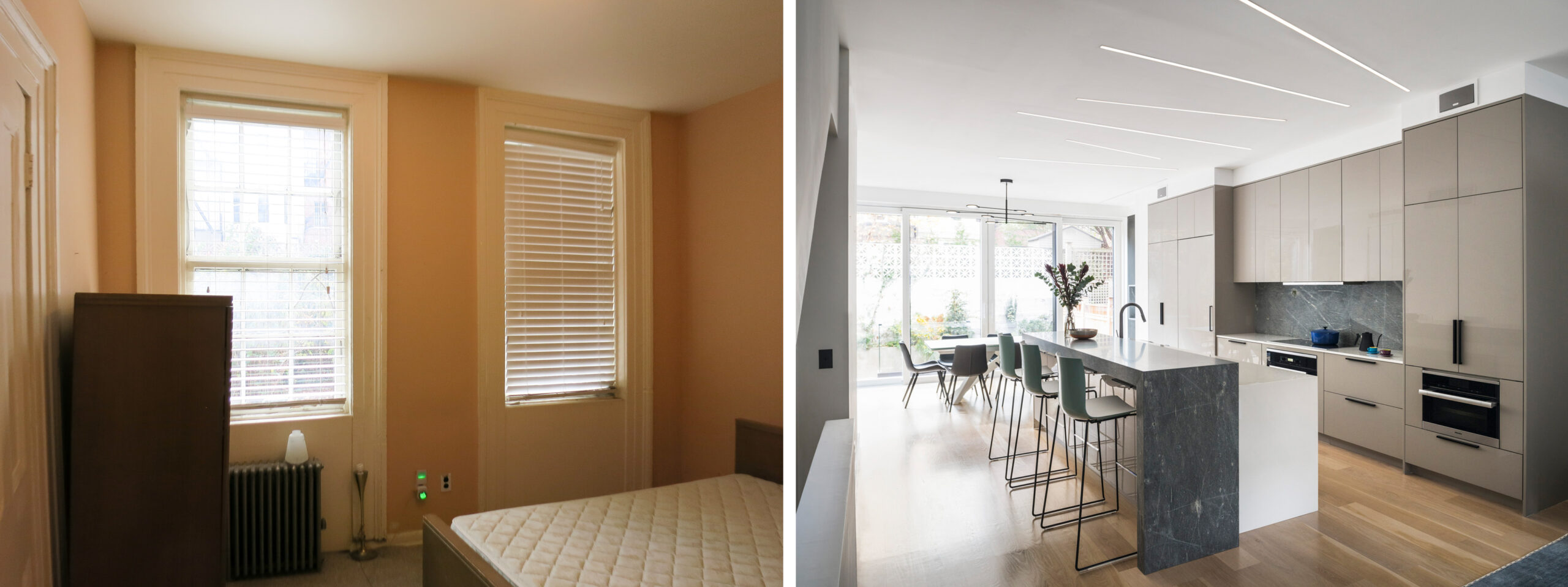
Finish Photography: Adam Kane Macchia (Adam Kane Macchia Photography)
When renovating the parlor in a Passive House, removal of radiators along the windows and improved thermal comfort throughout the home leads to rooms that are bigger, brighter, and free of clunky mechanicals.
In this Brooklyn Heights Passive House, we increased the openings and knocked down a wall that previously held a guest bedroom. This created a new space for a large kitchen with a full dining area next to a wall of glass. Whereas the area by the window had been blocked by a radiator, the retrofit made it not only accessible, but one of the most charming spaces in the entire home.
Carroll Gardens Entry Stair Hallway
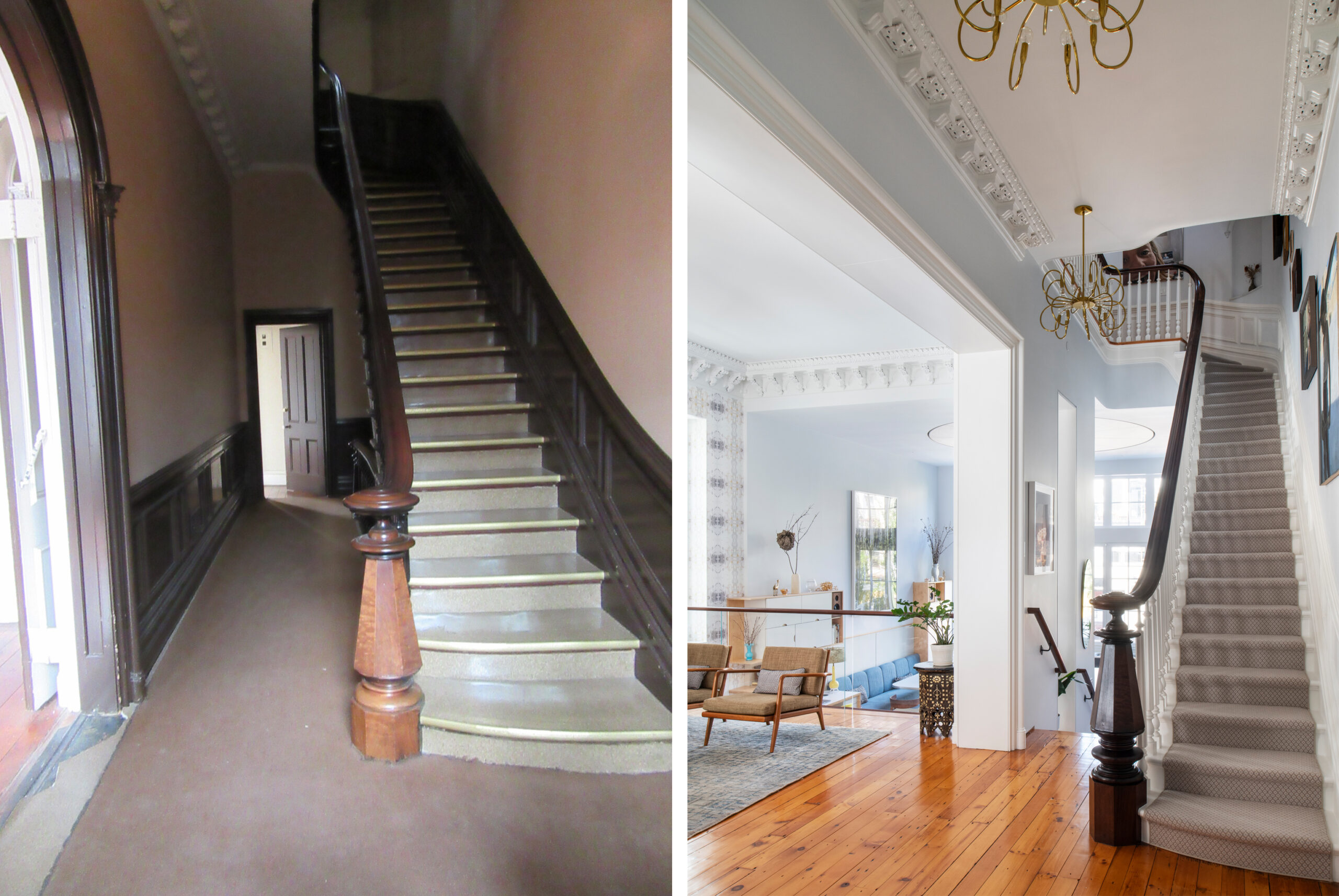
Finish Photography: Adam Kane Macchia (Adam Kane Macchia Photography)
Opening up the front stair hall is a great opportunity to flood the parlor floor in light and create an inviting place to enter the home. In this Passive House retrofit of a Brooklyn brownstone, creating a double height space to house the kitchen at the rear of the parlor floor allowed us to include a large expanse of Passive-certified glazing, which transforms the entire parlor floor. The light from the back of the house now reaches what had been a restrictive and dark hallway that had limited use and it instead becomes an extension of the living area. We were able to keep the existing staircase in place throughout construction, restoring it to its historic grandeur.
In a typical house, large, high-ceilinged spaces are a challenge to keep comfortable throughout the year, but Passive House measures allow wide open spaces without drafts or uneven temperatures regardless of the size of the space. Filtered fresh air recirculates air throughout the home, creating consistent temperatures throughout from top to bottom. Without a combination of airtightness, continuous insulation, and high-performance glazing, keeping such a capacious room comfortable would be both very difficult and very expensive.
Brooklyn Heights Cellar Gym + Sauna
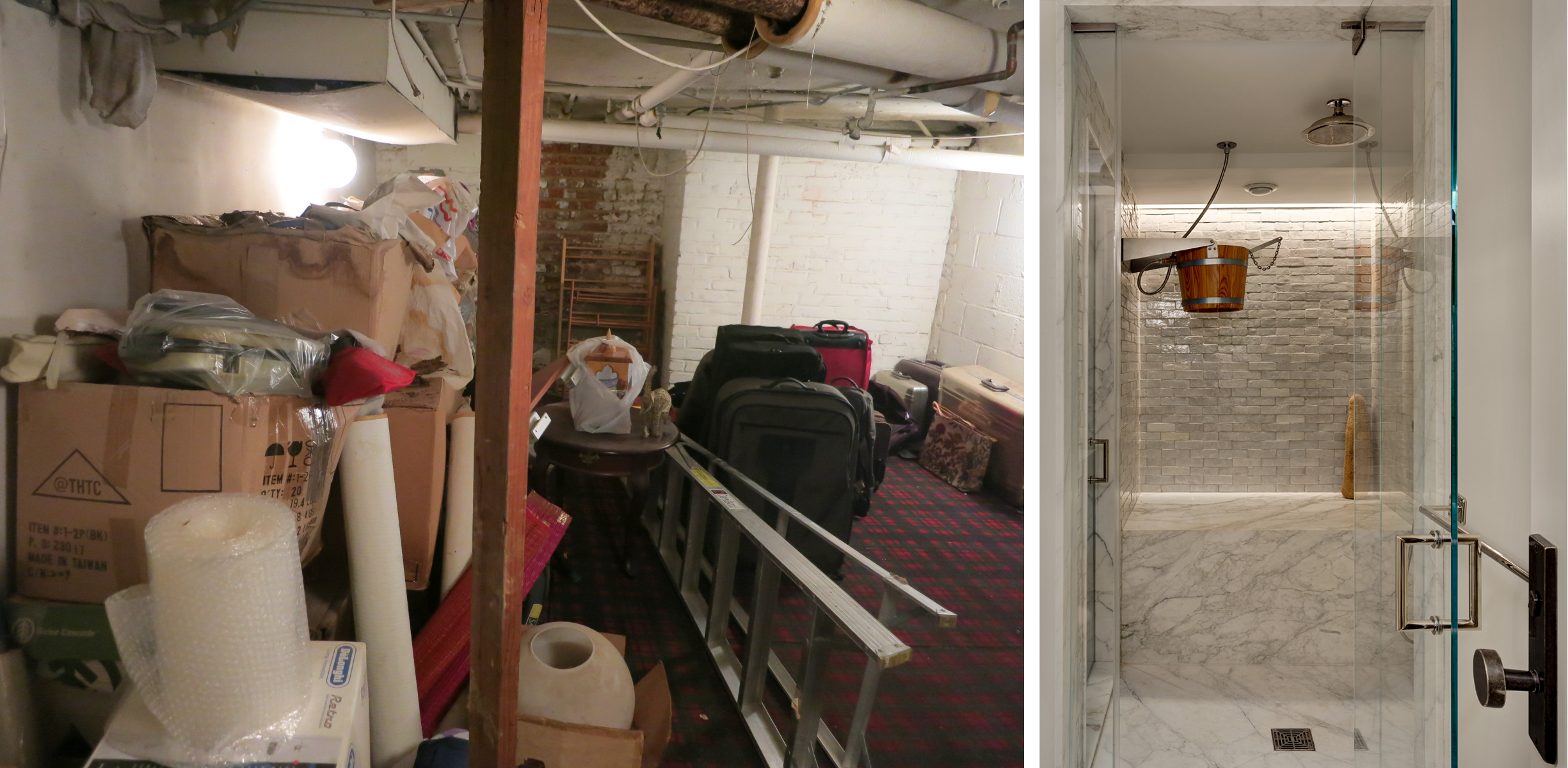
Finish Photography: Peter Peirce (peterpeirceinc – My WordPress Blog)
The benefits of Passive House design go all the way down to the cellar. Our standard Passive House cellar treatment, which includes a waterproof vapor barrier and four inches of below-slab insulation, creates below-grade spaces that are warm and comfortable from floor to ceiling. In terms of temperature and humidity, the conditioned space is effectively no different from the upstairs.
Once moisture and temperature conditions are leveled out, design possibilities open up and designers have the opportunity to create unique and cloistered areas within the home that can become sanctuaries for occupants. In this Brooklyn Heights cellar, we transformed the space from an unfinished storage room full of clunky mechanical systems and pipes to a home gym complete with a filtered water station, sleek vents, and an adjacent bathroom housing a steam room and bucket shower.
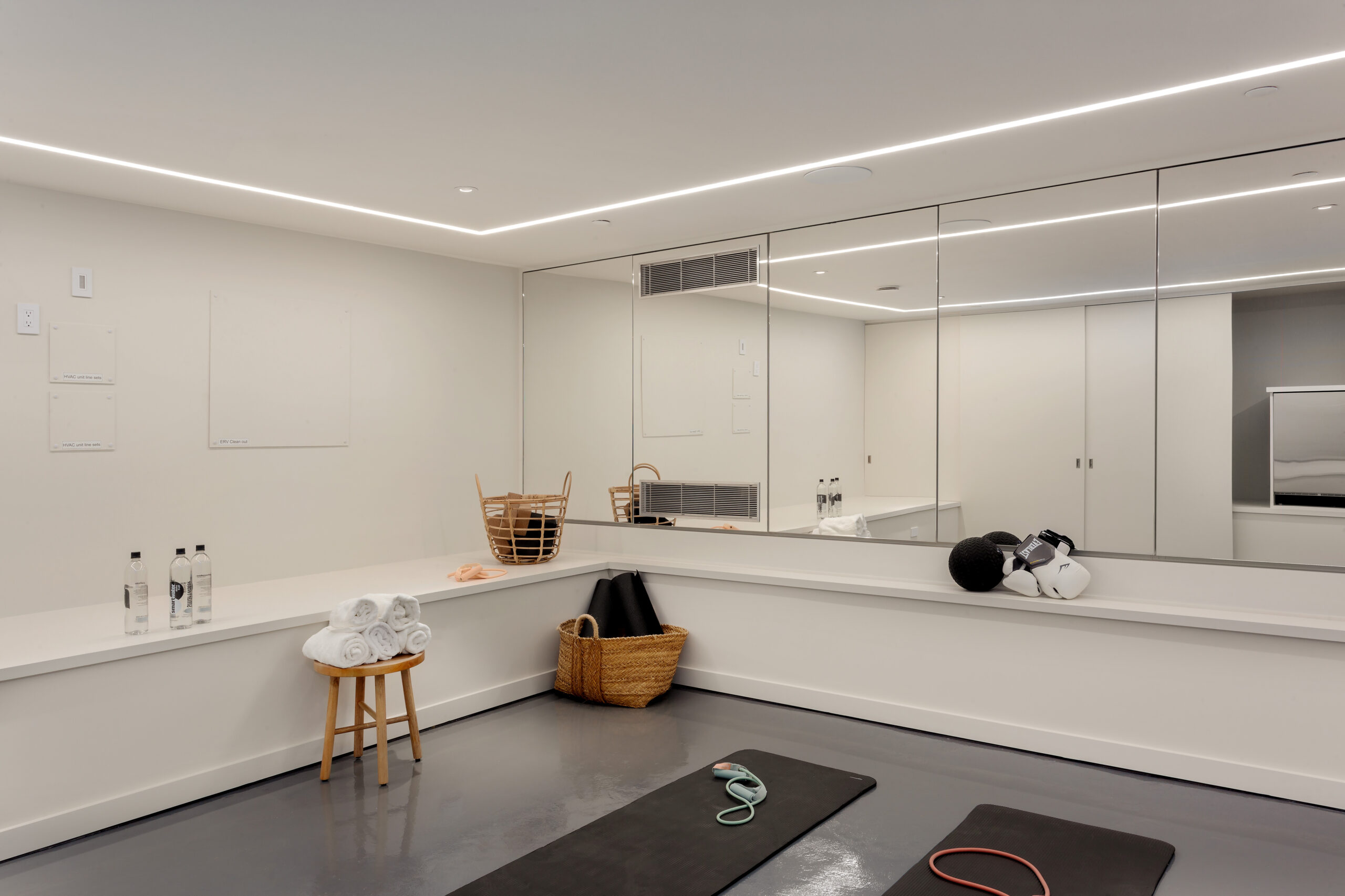
Finish Photography: Peter Peirce (peterpeirceinc – My WordPress Blog)
Conclusion:
For all of our building projects, we work with Passive House consultants through Passive House planning software, which ensures that every decision we make will operate as intended. Bringing the Passive House consultants in early ensures that our design do not have to go backwards. This level of confidence makes it exciting to see the new and interesting spaces and conditions we create that benefit our clients.
Judging for the 11th A+Awards is now underway! While awaiting the Winners, learn more about Architizer’s Vision Awards. The Main Entry Deadline on June 9th is fast approaching. Start your entry today >
